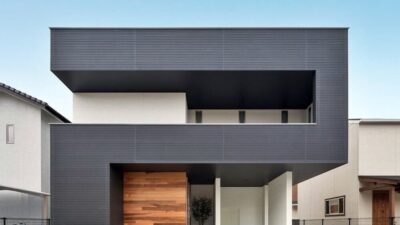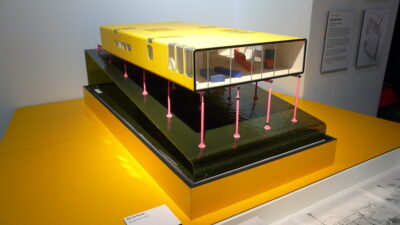Embarking on a career in architecture, particularly in Maryland, is a journey that blends artistic vision with technical expertise. This introduction aims to guide aspiring architects through the essential steps required to succeed in this dynamic field. Maryland, known for its rich historical heritage and burgeoning urban landscapes, offers a unique backdrop for architects to develop and showcase their skills.
The process of becoming an architect is structured yet rewarding, involving several key stages: education, practical experience, examination, and continuous professional development. Firstly, obtaining a comprehensive education from a National Architectural Accrediting Board (NAAB)-accredited institution is crucial. Maryland boasts esteemed universities like the University of Maryland, College Park, which offer programs tailored to budding architects.
Following education, gaining real-world experience under the Architectural Experience Program (AXP) is a pivotal step. This program ensures that future architects acquire a holistic understanding of the architectural practice. The journey continues with the Architect Registration Examination (ARE), a rigorous assessment that tests a wide range of architectural knowledge and skills.
Upon passing the ARE, aspiring architects can apply for their professional license in Maryland, marking the culmination of their initial training. However, the journey doesn’t end there. The field of architecture demands continual learning and adaptation, especially in a state like Maryland where architectural innovation and sustainability are increasingly prioritized. This guide is designed to navigate through these steps, offering insights and practical advice to help you embark on a fulfilling career in architecture in Maryland. The path to becoming an architect is indeed challenging, but the rewards of creating impactful, sustainable, and innovative spaces are immeasurable.
Step 1: Education
Bachelor’s or Master’s Degree in Architecture
- Accreditation: Your architecture program must be accredited by the National Architectural Accrediting Board (NAAB);
- Institutions in Maryland: Maryland hosts reputable institutions offering accredited architecture programs, like the University of Maryland, College Park.
Step 2: Gaining Experience
Architectural Experience Program (AXP)
The Architectural Experience Program (AXP), a critical component of the journey to becoming a licensed architect in Maryland, is designed to provide comprehensive, practical training. Administered by the National Council of Architectural Registration Boards (NCARB), the AXP outlines a structured framework for gaining the experience necessary to practice architecture competently and confidently.
Duration and Requirements
- Work Experience Hours: The AXP requires aspiring architects to complete approximately 3,740 hours of work experience. This experience must be documented and supervised by a licensed architect, ensuring that the training is relevant and of a high standard;
- Time Frame: Typically, candidates can complete the AXP within three to five years, depending on their work schedule and the opportunities available to them;
- Flexibility: The program is designed to be flexible, allowing participants to gain experience in full-time, part-time, or even in diverse employment settings including traditional architectural practices, government roles, and related industry jobs.
Areas of Experience
The AXP’s required hours are divided into six major areas, each focusing on different aspects of architectural practice:
- Practice Management: Understanding the business side of architecture, including project management and operations;
- Project Management: Emphasizing the skills needed to run projects efficiently, from budgeting to team coordination;
- Programming & Analysis: Involving the initial stages of design, such as assessing client needs and site conditions;
- Project Planning & Design: Focused on the conceptual and schematic design of buildings and spaces;
- Project Development & Documentation: Covering the detailed development of construction documents and building designs;
- Construction & Evaluation: Addressing the process of construction administration, project handover, and post-construction services.
This structured experience ensures that candidates are not only proficient in design but also in the practical aspects of bringing a project to fruition. The AXP’s comprehensive nature means that by the time a candidate completes the program, they have a well-rounded understanding of what it takes to be an architect – from the initial sketch to the final handover of a project.
The AXP experience in Maryland, with its diverse architectural landscape, from historic buildings to modern urban projects, offers a unique learning platform. Aspiring architects will find that the state’s varied architectural needs and challenges provide a rich environment for professional growth and practical learning. By the end of the AXP, candidates are well-prepared to tackle the complexities of the architectural profession, making them valuable assets to any architectural practice or related field.
Step 3: Licensure Examination
Architect Registration Examination (ARE)
- Overview: The ARE is a multi-part exam that assesses your knowledge and skills in all aspects of architecture;
- Components: The exam includes sections on project management, site planning, construction documentation, and more;
- Preparation: It’s advisable to prepare thoroughly for this exam, as it’s a significant step towards your licensure.
Step 4: Maryland Architectural License
Application Process
- Submission of Documents: After passing the ARE, submit your education, AXP experience, and exam results to the Maryland Board of Architects;
- Background Check: A background check is often part of the licensing process.
Step 5: Continuing Education
Maintaining Licensure
- Requirements: Maryland requires licensed architects to complete continuing education to maintain their license. This involves completing a certain number of learning units within a renewal period;
- Purpose: These requirements ensure that architects stay updated with the latest trends, technologies, and regulations in the field.
Career Opportunities in Maryland
- Scope: As a licensed architect in Maryland, you can work in various sectors like residential, commercial, and urban planning;
- Trends: Maryland, particularly areas around Baltimore and the Washington, D.C. metro area, presents diverse opportunities due to its growing infrastructure and redevelopment projects.
Challenges and Rewards of Being an Architect in Maryland
- Challenges: The path to becoming an architect involves a significant investment of time and effort in education and training;
- Rewards: Architects in Maryland have the unique opportunity to influence the built environment and contribute to sustainable and innovative architectural solutions.
Understanding Maryland’s Architectural Landscape
Maryland’s architectural landscape is a vibrant tapestry that beautifully intertwines the old with the new. This blend of historical and contemporary styles mirrors the state’s rich cultural heritage, offering an engaging environment for architects.
Characteristics
- Historical Richness: Maryland’s architectural history is deeply rooted in its colonial past, with numerous structures reflecting styles from Georgian to Federalist. Cities like Annapolis and Baltimore are treasure troves of historic buildings, showcasing intricate brickwork and ornate details;
- Modern Influences: In contrast, contemporary architectural styles in Maryland demonstrate a shift towards sleek, modern designs. This is evident in urban centers, where glass and steel structures rise alongside traditional brick buildings, creating a striking visual juxtaposition;
- Cultural Diversity: The architecture in Maryland also reflects its diverse population. Influences from various cultures can be seen in architectural designs, ranging from the African-American heritage of the Eastern Shore to the more recent international influences in suburban and urban areas.
Sustainability and Innovation
- Eco-Friendly Practices: In recent years, there has been a significant move towards sustainability in Maryland’s architecture. Green building practices are increasingly adopted, focusing on energy efficiency, sustainable materials, and minimizing environmental impact;
- Innovative Designs: Architects in Maryland are exploring innovative designs that incorporate eco-friendly technologies. This includes the use of solar panels, green roofs, and smart building techniques that adapt to environmental conditions to optimize energy use;
- Community and Environment: The integration of architecture with its surrounding environment is also a key focus. Designs that complement and enhance natural landscapes, and urban developments that aim to improve community well-being, are becoming more prevalent;
- Regulatory Support: Maryland’s government supports sustainable architecture through various initiatives and regulations, encouraging architects to design buildings that are both aesthetically pleasing and environmentally responsible.
The architectural scene in Maryland thus offers a fascinating blend of tradition and modernity, driven by a commitment to sustainability and innovation. For architects, this means the opportunity to work on a wide range of projects – from preserving historic buildings to designing cutting-edge, eco-friendly structures. The state’s architectural diversity not only enriches its visual appeal but also makes it a dynamic and progressive field for professionals in the industry.
Networking and Professional Development
Joining organizations like the American Institute of Architects (AIA) Maryland chapter can be beneficial for networking, professional development, and staying informed about industry trends.
Conclusion
Becoming an architect in Maryland indeed represents a path filled with challenges, but it is equally laden with immense rewards and opportunities for personal and professional growth. This journey, while demanding a high level of dedication and skill, opens up a world where creativity meets functionality, where art intersects with science, and where visions turn into tangible realities.
- Commitment to Excellence: The journey to becoming an architect in Maryland is underpinned by a commitment to excellence. From the rigorous educational prerequisites to the demanding AXP and ARE, each step is designed to instill a deep understanding of both the artistic and technical aspects of architecture;
- Adaptability and Lifelong Learning: The field of architecture, particularly in a state as diverse as Maryland, is ever-evolving. Staying abreast of the latest technologies, design trends, and sustainability practices is crucial. This requires a mindset geared towards continual learning and adaptability;
- Collaboration and Community Impact: Architects in Maryland have the unique opportunity to contribute to the community’s fabric. Their work goes beyond creating buildings; it involves shaping environments, influencing culture, and enhancing the quality of life for residents. Collaboration with clients, engineers, and other architects plays a pivotal role in this process;
- Career Opportunities and Growth: The diverse architectural landscape of Maryland provides a broad spectrum of career opportunities. Whether it’s working on historic preservation projects, designing contemporary urban spaces, or contributing to sustainable community developments, the scope for professional growth and specialization is vast;
- Personal Fulfillment: Perhaps the most rewarding aspect of being an architect in Maryland is the personal fulfillment that comes from seeing your ideas materialize. The satisfaction of designing spaces that will be experienced and appreciated by many is an unparalleled experience.
In conclusion, pursuing architecture in Maryland is not just about building structures; it’s about building a legacy. It’s a profession that demands passion, creativity, and a relentless pursuit of knowledge, but for those who are up to the challenge, it promises a deeply fulfilling and impactful career.











